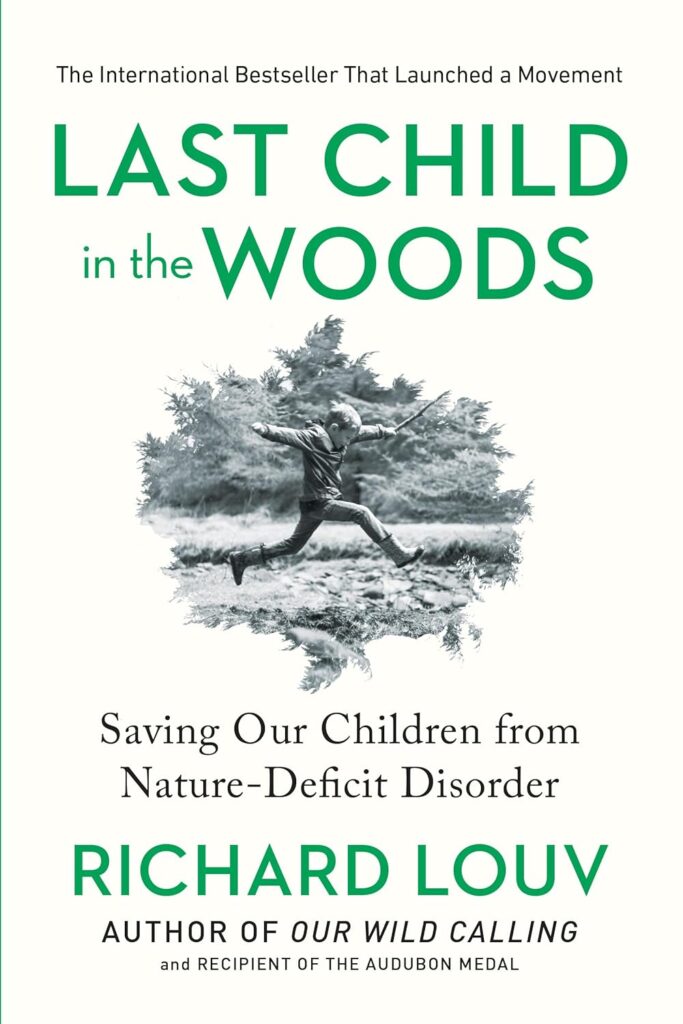As a child, I spent countless hours exploring outdoors, building forts, climbing trees, and letting my imagination run wild. Those experiences shaped me in ways I’m only now beginning to fully appreciate.
Today, as both a parent and a child development specialist, I’ve come to understand the profound impact that outdoor play can have on a child’s growth and well-being.
Richard Louv, author of “Last Child in the Woods,” once said, “Time in nature is not leisure time – it’s an essential investment in our children’s health.” This sentiment resonates deeply with me, especially in our increasingly digital world.
Recent studies have shown that children who regularly engage in outdoor play experience a 55% lower risk of developing myopia and show a 20% improvement in problem-solving skills compared to their indoor-bound peers.
These statistics are just the beginning when it comes to the benefits of outdoor play. Let’s explore the many advantages of letting our kids roam free in nature and how we can foster this essential aspect of childhood development.
Physical Health Benefits
Vitamin D Boost
One of the most immediate benefits of outdoor play is the natural increase in vitamin D levels. This crucial nutrient, often called the “sunshine vitamin,” plays a vital role in bone health, immune function, and overall well-being.
A study published in the Journal of Pediatrics found that children who spent more time outdoors had significantly higher vitamin D levels compared to those who primarily stayed indoors.
To maximize vitamin D production, aim for at least 15-20 minutes of outdoor play during peak sunlight hours. Remember to apply sunscreen for longer periods to protect against harmful UV rays.
Enhanced Physical Activity
Outdoor environments naturally encourage physical activity. Running, jumping, climbing, and balancing all contribute to the development of gross motor skills and overall physical fitness.
Research shows that children engaged in regular outdoor play have 35% higher levels of physical activity compared to those who don’t.
This increased activity helps maintain a healthy weight, strengthens bones, improves cardiovascular health, and enhances coordination.
The varied terrain and natural obstacles found outdoors provide a rich sensory experience that indoor environments simply can’t match.
Obesity Prevention
In an era where childhood obesity rates are alarmingly high, outdoor play emerges as a powerful preventive tool.
A study published in the International Journal of Obesity found that children who spent more time playing outdoors had a 27% lower risk of being overweight or obese.
Outdoor play makes physical activity feel like fun as opposed to a chore. From games of tag, to nature hikes, the options are endless and naturally engaging for children.
Improved Sleep Quality
Regular outdoor play can significantly improve sleep quality in children. Exposure to natural light helps regulate the body’s circadian rhythm, leading to better sleep patterns.
A study in the journal Sleep Health found that children who spent more time outdoors fell asleep faster and experienced fewer night wakings.
Enhanced Immune Function
Time spent in nature can boost the immune system. Research published in the International Journal of Environmental Research and Public Health suggests that exposure to diverse microbes in outdoor environments can help strengthen children’s immune responses.
Cognitive Development
Improved Problem-Solving Skills
Nature provides a rich, ever-changing environment that stimulates problem-solving skills, creativity, and critical thinking.
A study in the journal Frontiers in Psychology revealed that children who regularly played outdoors showed improved executive functioning skills, including better attention spans and increased cognitive flexibility.
I’ve observed this firsthand with my own children. When faced with a fallen tree blocking their path during a hike, they instinctively worked together to find choice routes, demonstrating problem-solving skills and spatial awareness in action.
Enhanced Attention Span
Outdoor play can significantly improve a child’s ability to focus and concentrate. The natural environment offers a wealth of stimuli that capture attention without overwhelming the senses.
A study published in the Journal of Attention Disorders found that children with ADHD who spent time in green outdoor spaces had significantly milder symptoms compared to those who played indoors.
Boosted Creativity
Nature serves as an endless source of inspiration for children’s imaginations. Sticks become magic wands, rocks transform into precious gems, and trees become castles.
This type of imaginative play is crucial for cognitive development and creative thinking skills.
Improved Spatial Awareness
Navigating outdoor environments helps children develop better spatial awareness and orientation skills. Climbing trees, balancing on logs, and exploring uneven terrain all contribute to a child’s understanding of their body in relation to the space around them.
Emotional and Social Growth
Stress Reduction
In our fast-paced world, even children are not immune to stress. Outdoor play provides a natural antidote.
A study in the International Journal of Environmental Research and Public Health found that children who spent more time in nature had lower cortisol levels (a stress hormone) and reported feeling more relaxed and happy.
The sensory experiences of nature – the feel of grass under bare feet, the sound of rustling leaves, the smell of fresh air – all contribute to a sense of calm and well-being.
Enhanced Social Skills
Outdoor play provides rich opportunities for social interaction and development. Whether it’s working together to build a fort or taking turns on a tire swing, these experiences foster cooperation, communication, and conflict resolution skills.
I’ve watched shy children blossom in outdoor settings, finding it easier to start conversations and join in group activities.
The unstructured nature of outdoor play allows for organic social interactions that are crucial for developing emotional intelligence and empathy.
Improved Self-Confidence
Outdoor play often involves taking calculated risks, such as climbing a tree or crossing a stream. Successfully navigating these challenges builds self-confidence and resilience in children.
They learn to trust their abilities and develop a growth mindset that can benefit them throughout their lives.
Better Emotional Regulation
Time spent in nature can help children develop better emotional regulation skills. The calming effect of natural environments can help children learn to manage their emotions more effectively.
A study in the journal Health & – Place found that children who had access to green spaces showed better emotional well-being and fewer behavioral problems.
Environmental Awareness
Fostering Environmental Stewardship
Outdoor play naturally cultivates an appreciation for the environment. Children who spend time in nature are more likely to develop a sense of environmental stewardship.
A long-term study published in the Journal of Environmental Psychology found that childhood experiences in nature were the strongest predictor of pro-environmental attitudes and behaviors in adulthood.
By allowing children to interact with nature, we’re not just benefiting their immediate development but potentially shaping future environmental leaders.
Developing Ecological Literacy
Regular exposure to nature helps children develop ecological literacy – an understanding of how natural systems work and how human actions impact these systems.
This knowledge is crucial for raising environmentally conscious citizens who can make informed decisions about sustainability and conservation.
Encouraging Biodiversity Appreciation
Outdoor play allows children to observe and interact with a variety of plant and animal species. This firsthand experience with biodiversity can foster a lifelong interest in nature and conservation.
Children who are familiar with local flora and fauna are more likely to care about protecting these species and their habitats.
Sensory Development
Rich Sensory Experiences
Outdoor environments offer a wealth of sensory stimuli that indoor settings can’t copy. The feel of different textures (rough tree bark, smooth pebbles), the sounds of nature (bird calls, rustling leaves), the smells of plants and earth, and the visual array of colors and shapes all contribute to rich sensory development.
Vestibular System Stimulation
Activities like swinging, spinning, and rolling down hills provide important stimulation to the vestibular system, which is responsible for balance and spatial orientation. This stimulation is crucial for developing coordination and body awareness.
Proprioception Development
Outdoor play often involves activities that challenge and develop proprioception – the sense of where our body parts are in space.
Climbing, jumping, and navigating uneven terrain all contribute to improved proprioception, which is essential for physical coordination and safety.
Implementing Outdoor Play
Creating Opportunities
Integrating more outdoor play into a child’s routine doesn’t have to be complicated. Here are some practical steps:
- Schedule daily outdoor time, even if it’s just for 30 minutes.
- Create a nature-friendly backyard with elements like a small garden or a sandbox.
- Organize family nature outings on weekends.
- Encourage outdoor free play with minimal adult intervention.
- Join or create a local nature play group.
Remember, the goal is to make outdoor play a regular, enjoyable part of your child’s life, not another scheduled activity.
Overcoming Challenges
While the benefits of outdoor play are clear, implementing it can come with challenges. Safety concerns, time constraints, and the allure of screens are common obstacles.
Here’s how to address them:
Safety Concerns
Teach children basic outdoor safety rules and supervise appropriately based on age and environment. Start with small, controlled outdoor experiences and gradually expand as children become more confident and capable.
Time Constraints
Prioritize outdoor play by integrating it into daily routines, like walking to school or playing outside after dinner. Even short bursts of outdoor time can be useful.
Screen Competition
Set clear limits on screen time and make outdoor time a non-negotiable part of the day. Consider using technology as a tool for outdoor exploration, such as nature photography or plant identification apps.
Adapting to Different Scenarios
Outdoor play can be adapted to various settings and circumstances:
Urban Environments
Utilize local parks, community gardens, or even balcony spaces for nature-based activities. Look for green spaces in unexpected places, like rooftop gardens or pocket parks.
Inclement Weather
Embrace the elements with suitable gear – rainy days can be perfect for puddle jumping and observing nature’s changes. Snow offers opportunities for building, sledding, and tracking animals.
Limited Mobility
Focus on sensory experiences like feeling different textures of leaves or listening to bird calls. Create accessible nature areas with raised garden beds or sensory paths.
Building on Basics
As children grow more comfortable with outdoor play, gradually introduce more complex activities:
- Start with simple nature walks and progress to longer hikes or camping trips.
- Begin with basic gardening tasks and move towards maintaining a full vegetable garden.
- Introduce simple outdoor games and advance to more complex team sports or nature-based challenges.
Exercises to Try
Nature Scavenger Hunt
Create a list of natural items for children to find and observe. This can include specific types of leaves, rocks with interesting patterns, or evidence of animal activity.
Encourage children to document their findings through drawings or photographs.
Outdoor Art
Use natural materials to create temporary art installations. This could involve arranging leaves and flowers to form patterns, building sculptures from sticks and stones, or using mud to create nature-inspired paintings.
Sensory Walk
Encourage children to use all their senses to experience their environment. Have them close their eyes and describe what they hear, feel the texture of different tree barks, or identify plants by their scent.
Cloud Watching
Lie on the grass and imagine shapes in the clouds, fostering creativity and relaxation. This simple activity can lead to discussions about weather patterns and atmospheric conditions.
Backyard Camping
Set up a tent in the backyard for an overnight adventure. This introduces children to camping skills in a safe environment and provides opportunities for stargazing and nocturnal wildlife observation.
Nature Journaling
Encourage children to keep a nature journal where they can record their observations, draw pictures of plants and animals, and reflect on their outdoor experiences. This activity combines science, art, and writing skills.
Outdoor Obstacle Course
Create a natural obstacle course using logs, rocks, and other outdoor elements. This activity promotes physical fitness, problem-solving, and spatial awareness.
The Role of Adults
As parents, educators, and caregivers, we play a crucial role in facilitating meaningful outdoor experiences for children. Here are some ways we can support and enhance outdoor play:
Model Enthusiasm
Children often mirror the attitudes of adults around them. Show genuine interest and excitement about nature and outdoor activities to inspire the same in children.
Provide Freedom and Support
Allow children the freedom to explore and take suitable risks while providing support and guidance when needed. This balance helps build confidence and independence.
Ask Open-Ended Questions
Encourage critical thinking by asking open-ended questions about what children observe in nature. For example, “Why do you think this leaf has changed color?” or “What might live in this hole?”
Share Knowledge Respectfully
When children show interest in a particular aspect of nature, share your knowledge in a way that enhances their curiosity as opposed to lecturing. Encourage them to find answers through observation and research.
Create Rituals
Establish outdoor rituals, such as a weekly nature walk or a monthly camping trip. These regular experiences create lasting memories and a deep connection to the natural world.
Addressing Common Concerns
“It’s Not Safe”
While safety is a valid concern, the benefits of outdoor play far outweigh the risks when proper precautions are taken. Teach children about potential hazards and how to navigate them safely.
Start with supervised outdoor time and gradually increase independence as children show responsible behavior.
“There’s No Time”
In our busy lives, finding time for outdoor play can be challenging. However, even short periods of outdoor time can be useful.
Prioritize outdoor play by integrating it into daily routines, such as walking to school or playing outside before dinner.
“We Don’t Have Access to Nature”
Even in urban environments, opportunities for nature connection exist. City parks, community gardens, and even small patches of green space can provide valuable outdoor experiences.
Look for nature in unexpected places, like watching birds from a balcony or growing plants in window boxes.
“My Child Prefers Indoor Activities”
Some children may initially resist outdoor play, especially if they’re used to indoor entertainment. Start with short, engaging outdoor activities that align with their interests.
For example, a child who loves art might enjoy outdoor painting or nature-inspired crafts.
The Long-Term Impact
The benefits of outdoor play extend far beyond childhood. Research suggests that regular nature experiences in childhood are associated with:
- Improved mental health in adulthood
- Greater physical activity levels throughout life
- Stronger environmental attitudes and behaviors
- Enhanced creativity and problem-solving skills
- Better stress management abilities
By prioritizing outdoor play, we’re not just enriching our children’s present experiences and investing in their future well-being and the health of our planet.
People Also Asked
How much outdoor time do kids need daily?
Experts recommend that children get at least 1-3 hours of outdoor play daily. The CDC suggests 60 minutes of physical activity for children aged 6 and older, while toddlers and preschoolers benefit from at least 3 hours spread throughout the day.
What are the best outdoor activities for toddlers?
Toddlers thrive on activities that encourage movement and sensory exploration, such as:
- Playing in a sandbox
- Running and chasing games
- Riding a balance bike or tricycle
- Water play (with supervision)
- Climbing on safe playground structures
- Nature walks and scavenger hunts
- Sidewalk chalk and bubble blowing
Can outdoor play help with ADHD symptoms?
Yes! Research shows that time in natural settings (like parks and forests) can significantly reduce hyperactivity, impulsivity, and inattention in children with ADHD. Green spaces offer a calming effect, improving focus and self-regulation.
Is it safe for kids to play outside in cold weather?
Yes, as long as they are dressed appropriately. Layering clothing, wearing hats, gloves, and waterproof boots, and limiting exposure in extreme temperatures make outdoor play safe.
The American Academy of Pediatrics advises keeping an eye on wind chill and ensuring kids take breaks indoors to warm up.
How does outdoor play affect children’s sleep?
Outdoor play regulates circadian rhythms, increases melatonin production, and helps kids expend energy, leading to deeper, more restful sleep. Exposure to natural light during the day improves nighttime sleep quality.
What are the benefits of forest schools?
Forest schools focus on outdoor, play-based learning in natural environments, offering benefits like:
- Enhanced problem-solving and creativity
- Stronger gross and fine motor skills
- Improved concentration and independence
- A deeper connection to nature
- Better social and teamwork skills
Can outdoor play reduce childhood obesity?
Yes! Outdoor play encourages active movement, reducing screen time and promoting physical fitness. Activities like running, climbing, and biking boost metabolism, helping children maintain a healthy weight.
How does nature exposure impact children’s immune systems?
Spending time in nature strengthens immune function by exposing children to diverse microbes that help develop a stronger immune response.
Fresh air, vitamin D from sunlight, and reduced exposure to indoor pollutants also contribute to better overall health.
What role does outdoor play have in developing social skills?
Outdoor play teaches kids cooperation, communication, and conflict resolution through group activities like team sports, imaginative play, and problem-solving challenges. It also fosters empathy and negotiation skills in unstructured play settings.
Are there risks associated with too much sun exposure during outdoor play?
Yes, prolonged sun exposure increases the risk of sunburn, heat exhaustion, and long-term skin damage. To stay safe:
- Apply broad-spectrum sunscreen (SPF 30 or higher)
- Use hats and sunglasses
- Seek shade during peak sun hours (10 AM – 4 PM)
- Keep kids hydrated
Key Takeaways
- Outdoor play significantly boosts physical health, including vitamin D levels and overall fitness.
- Nature-based activities enhance cognitive skills, including problem-solving and attention span.
- Regular outdoor time reduces stress and improves emotional well-being in children.
- Outdoor play fosters social skills and environmental awareness.
- Implementing outdoor play needs creativity and consistency but offers immense long-term benefits.




